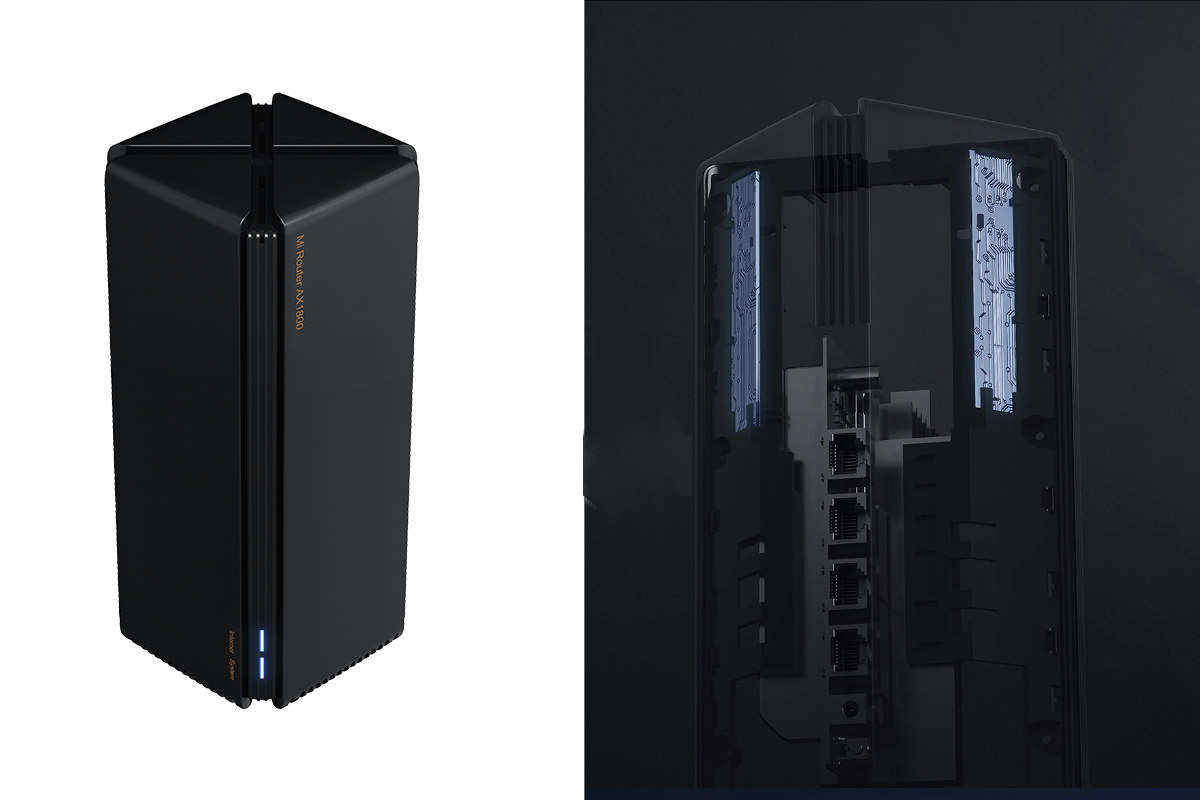[Update May 20, 2020: It did not last long, as Xiaomi Mi Router AX1800 is not the most affordable WiFi 6 router anymore with the launch of Honor Router 3 (XD20) AX3000 router for 219 RMB in China, or about $31 US]
When Xiaomi AIoT router AX3600 launched in April for around $135, we noted that while it was the most affordable WiFi 6 router we’d seen so far, the other 802.11ax WiFi 6 routers had also come down in price significantly.
But now the company has come up with a really inexpensive router: Xiaomi Mi Router AX1800 which I first discovered on Gearbest for just $67.50, but also available on Aliexpress for about $60 shipped. If you are in China, you should be able to get it for 329 RMB (around $46).
Xiaomi Mi Router AX1800 specifications:
- SoC – Qualcomm IPQ6000 quad-core Arm Cortex-A53 @ 1.2GHz with single-core network accelerator @ 1.5 GHz, called NPU for Network Processing Unit?
- System Memory – 256MB RAM
- Storage – 128MB flash
- Network Connectivity
- Wireless
- 2.4GHz WiFi
- 2×2 MIMO up to 574 Mbps using 802.11ax WiFi 6
- Channels: 1, 2, 3, 4, 5, 6, 7, 8, 9, 10, 11, 12, 13
- 5GHz WiFi
- 2×2 MIMO up to 1201Mbps using 802.11ax WiFi 6
- Channels: 36,40,44,48, 149,153,157,161,165
- 2x built-in dual-frequency antennas
- Security – WPA-PSKWPA2-PSKWPA3-SAE encryption, wireless access control (black and white list), SSID hiding, intelligent “anti-rub network”
- 2.4GHz WiFi
- Wired
- 1x Gigabit Ethernet WAN port
- 3x Gigabit Ethernet LAN ports
- Wireless
- Misc – 3x status LEDs, reset button
- Power Supply – 12V/1A via power barrel jack
- Dimensions – 222 x 97 x 97 mm
- Temperature Range – 0 to 40°C
- Humidity – 10% ~ 90% RH (non-condensing)

Just like other Mi routers, Xiaomi Mi Router AX1800 runs MiWiFi operating system based on OpenWrt and can be managed via the router web admin interface, and/or Android/iOS MiWiFi mobile apps. The router ships with a user manual, an Ethernet cable, and the power supply.
But why making a WiFi 6 “AX” router with speeds that can be obtained from WiFi 5 “AC” routers launched 6 years ago? That’s because, besides the theoretically faster transfer rate, 802.11ax also performs better in high-density environments thanks to 1024QAM OFDM modulation support, and potentially lower power consumption of connected devices thanks to TWT (Target Wake Time), although I’m not sure the latter is supported in Xiaomi router.

Jean-Luc started CNX Software in 2010 as a part-time endeavor, before quitting his job as a software engineering manager, and starting to write daily news, and reviews full time later in 2011.
Support CNX Software! Donate via cryptocurrencies, become a Patron on Patreon, or purchase goods on Amazon or Aliexpress





